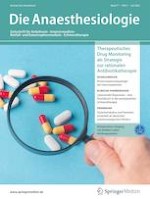Bildnachweise
Ischämie im rechten Thalamus/© Brandt L et al | all rights reserved Springer Medizin Verlag GmbH, Bei Immuntherapien das erhöhte Thromboserisiko beachten /© Leo Pharma GmbH, CAT-Management ist ganz einfach – oder doch nicht?/© LEO Pharma GmbH, Thrombus und Patientin im Gespräch/© crevis / adobe.stock.com (Symbolbild mit Fotomodell), Prof Klamroth/© Leo Pharma GmbH, Krankenhauspharmazie/© Leo Pharma GmbH, Interview Prof. Beyer Westendorf/© LEO Pharma, CAT-Management - Was gibt es Neues bei den NMH/© Leo Pharma GmbH, CAT: Was tun bei Lücken in der Evidenz/© Leo Pharma GmbH, c/© LEO Pharma GmbH, Ärztin misst Blutdruck bei Senior/© Drazen / Stock.adobe.com (Symbolbild mit Fotomodellen), Adenokarzinom des Magens/© jxfzsy / Getty Images / iStock, Arbeiter pustet Maschinenstaub und Dreck von Werkzeug/© dragana991 / Getty Images / iStock (Symbolbild mit Fotomodell), Digitale Mammographien links in kraniokaudaler Projektion./© Weigel, S. et al. / all rights reserved Springer Medizin Verlag GmbH, Frau mit Kopftuch und Infusion/© FatCamera / Getty Images / iStock (Symbolbild mit Fotomodell), Endoskopisches Bild eines Kolonkarzinoms/© Mehdorn M et al. / all rights reserved Springer Medizin Verlag GmbH, Brustbestrahlung/© Lange T et al. / all rights reserved Springer Medizin Verlag GmbH, Ga-PSMA-PET MRT Verdacht auf Prostatakarzinom/© Springer Medizin Verlag GmbH, Ekzem an der Brustwarze/© T. Jansen, NSCLC Adenokarzinom mit EGFR-Mutation und TTF-1-Positivität/© Tapia, C. et al. / all rights reserved Springer Medizin Verlag GmbH, Ältere Frau schluckt Tablette/© David Pereiras / stock.adobe.com (Symbolbild mit Fotomodellen), Patientin schaut besorgt auf Infusionsbeutel/© KatarzynaBialasiewicz / Getty Images / iStock (Symbolbild mit Fotomodellen), Ältere Frau im Gespräch mit ihrer Ärztin/© pucko_ns / stock.adobe.com (Symbolbild mit Fotomodell), Frau mit Kopftuch sitzt auf Krankenhausbett/© (M) LIGHTFIELD STUDIOS / stock.adobe.com (Symbolbild mit Fotomodell), Zeichen einer Rechtsherzbelastung bei Lungenembolie/© Hobohm L, et al. / all rights reserved Springer Medizin Verlag GmbH, Pflanzliches Arzneimittel/© Chariclo / Fotolia, Drei Patienten mit idealen Befunden für Salvage-Lymphadenektomie./© Horn, T. et al. / all rights reserved Springer Medizin Verlag GmbH, CT: fulminante Lungenarterienembolie/© Staab B et al. / all rights reserved Springer Medizin Verlag GmbH, Arzt zeigt Patient eine Grafik auf dem Tablet/© Pixel-Shot / stock.adobe.com (Symbolbild mit Fotomodellen), Ärztin kontrolliert Infusionssystem/© Wasan / stock.adobe.com (Symbolbild mit Fotomodell), Radiochirurgie: Hirnmetastase eines nichtkleinzelligen Lungenkarzinoms frontal rechts/© Diehl, C., Combs, S.E. / all rights reserved Springer Medizin Verlag GmbH, Ältere Frau mit Tabletten in der Hand/© LIGHTFIELD STUDIOS / stock.adobe.com (Symbolbild mit Fotomodell), Supralevatorischer Abszess in der Computertomographie/© Ommer A et al. / all rights reserved Springer Medizin Verlag GmbH, Lokal fortgeschrittenes Prostatakarzinom/© Preisser & Tilki / all rights reserved Springer Medizin Verlag GmbH, Immunhistochemische Analytik am Beispiel eines kolorektalen Karzinoms./© Büttner, R., Friedrichs, N. / all rights reserved Springer Medizin Verlag GmbH, Scharf begrenzte landkartenartige erythematöse Plaques/© M. Birke et al. / all rights reserved Springer Medizin Verlag GmbH, Postradiogene Morphea/© Stephan R. Künzel und Claudia Günther / all rights reserved Springer Medizin Verlag GmbH, Blutabnahme/© Grafvision / stock.adobe.com (Symbolbild mit Fotomodell), Arzt hält Koloskop/© Graphicroyalty / stock.adobe.com (Symbolbild mit Fotomodell), Metastasierendes nicht-kleinzelliges Lungenkarzinom/© Urushibara M. et al. doi.org/10.1186/s12957-023-02920-2 unter CC-BY 4.0, Infusion/© pix4U / Stock.adobe.com (Symbolbild mit Fotomodell), Operation bei Blasenkrebs/© anistidesign / Fotolia, Ärztin klärt Patientin über Medikamente auf/© auremar / Fotolia (Symbolbild mit Fotomodellen), Beckenvenenthrombose/© Jung et al. / all rights reserved Springer Medizin Verlag GmbH, Short-Segment-Barrett-Ösophagus mit submukosalem Adenokarzinom/© Baumer, S., Pech, O. / all rights reserved Springer Medizin Verlag GmbH, Therapieresistente Brustkrebszellen (in Rot)/© Sheheryar Kabraji und Sridhar Ramaswamy/NCI/cancer.gov, Periphere ulzerative Keratitis (PUK)/© Springer Medizin Verlag GmbH, Ärztin informiert ältere Patientin/© pucko_ns / stock.adobe.com (Symbolbild mit Fotomodellen), Klinisches Bild der Angiosarkome/© Beispiel: Musterfrau M et al. / all rights reserved Springer Medizin Verlag GmbH, Bestrahlungsplan bei Rektumkarzinom/© Springer Medizin Verlag GmbH, Histologische Befunde in der HE-Färbung (a) und PAS-Färbung (b)/© Brommer M. et al. / all rights reserved Springer Medizin Verlag GmbH, Molekulargenetische Testung bei Krebserkrankungen/© Max Kratzer, Intensivstation/© beerkoff / Fotolia (Symbolbild mit Fotomodellen), Person setzt DNS-Probe in Maschine ein/© Vit Kovalcik / stock.adobe.com (Symbolbild mit Fotomodell), Frau erhält Infusion/© Seventyfour / stock.adobe.com (Symbolbild mit Fotomodell), Mit dem MIBI(Multiplexed ion beam imaging)-Mikroskop aufgenommenes kolorektales Karzinom/© Mayer, A., Haist, M. / all rights reserved Springer Medizin Verlag GmbH, Darmpolyp/© Springer Medizin Verlag GmbH, Stethoskop, Symbole/© ipopba / istock, Herzform mit Stethoskop/© bernie_photo | istock, Frau formt Herz mit Händen/© Abbott Medical GmbH











